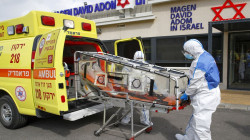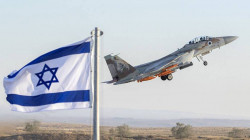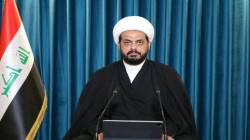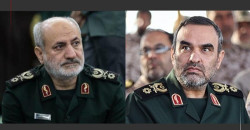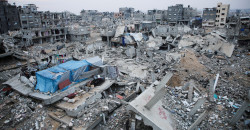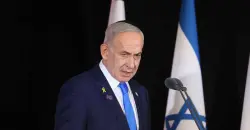Israeli Attack on Iraq's Osirak 1981: Setback or Impetus for Nuclear Weapons?
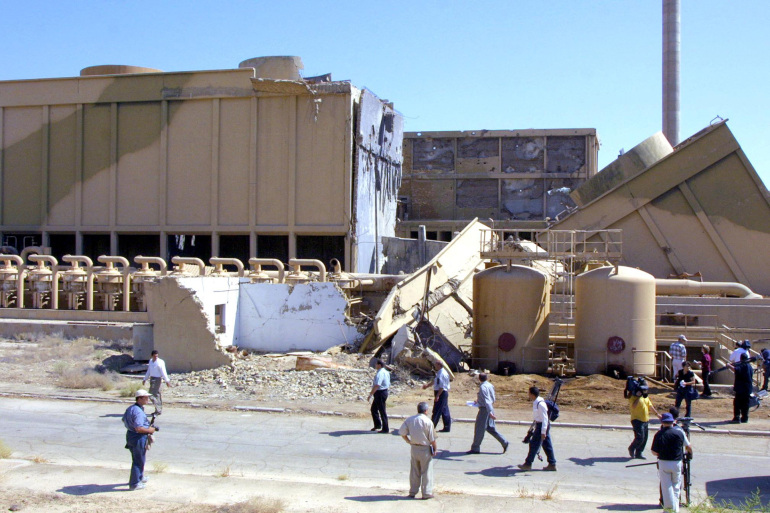
Shafaq News/ On June 7, 1981, 40 years ago today, Israel attacked and partially destroyed Iraq’s Osirak nuclear research reactor at Tuwaitha, using U.S. supplied F-15 and F-16 aircraft to carry out the attack. Ten Iraqi soldiers and one French engineer were killed during the airstrike. Apparently, the Israeli raid took President Ronald Reagan and his advisers completely by surprise, yet their predecessors, including President Jimmy Carter, were aware of the strong possibility of an attack.
As early as July 1980, U.S. Ambassador Sam Lewis warned Secretary of State Edmund Muskie and President Carter in an eyes-only telegram that his meeting with Israeli Prime Minister (Menachem) Begin had led him to conclude that the Israelis might undertake “preemptive strikes with conventional weapons… regardless of the awesome consequences of such action.” Later, Lewis suggested that information on this and other discussions with Begin did not reach the Reagan administration, though more needs to be learned about the sources for this gap in “institutional memory.”
According to Lewis’s messages, the Israelis were particularly worried about French and Italian aid to the Iraqi nuclear program and in a briefing to Begin in December 1980 Lewis assured him that we “are taking widespread concern about the Iran-Iraq war to press Italy and France to reassess their nuclear cooperation with Iraq.” Whether the Israelis were told about secret French measures to prevent an Iraqi weapons program is unclear, but Lewis warned Begin that “precipitate action against Iraq’s nuclear installations would be a severe setback to prospects for Middle East peace.” Indeed, the attack had a strongly negative impact on Israel’s image in the Arab world and elsewhere.
The reactor had been purchased from France under a bilateral agreement that it would be used for peaceful purposes. The research facility was also subject to International Atomic Energy Agency safeguards. Israel asserted that Iraq was on the brink of developing a nuclear weapons capability and justified the attack as an act of self-defense. Iraq insisted that its reactor program was peaceful, and France said that the reactor’s design features and the precautionary procedures it had implemented insured that the Osirak reactor could never be used in the production of nuclear weapons.
The attack, codenamed “Operation Opera,” was widely condemned internationally, but Israel suffered few long-term adverse consequences. The Israelis argued that their action significantly delayed Iraq’s long-term nuclear weapons ambitions, but a wide range of well-informed observers have since insisted that to the contrary the attack motivated Baghdad’s decision to pursue a nuclear weapons option – the attack and its aftermath simply drove the effort underground.
By the time the strike occurred, Iraq had pursued a nuclear research program for several decades. In 1976 it bought an Osiris-class research reactor from France, along with a smaller Isis-type reactor, a limited supply of enriched uranium, and technical training. Construction of the reactor began in 1979 at the al-Tuwaitha Nuclear Center outside Baghdad. The French called the reactor Osirak, a combination of the class designation Osiris with Iraq. The Iraqis called the larger reactor Tammuz 1 and the smaller one Tammuz 2, commemorating the date of the Ba’ath party’s rise to power in Iraq.
Whether Iraqi officials or scientists had weapons ambitions in mind or not, State Department officials were concerned during 1979 and 1980 that French-Iraqi and Italian-Iraqi nuclear transactions could help Baghdad develop ways and means to produce fissile material. France’s reactor deal was difficult to stop but French officials provided the U.S. with information about secret technical measures that would complicate any efforts to use the reactor and HEU for weapons purposes. Whether the French informed the Israelis about the steps they had taken is not clear, but some of the measures, such as pre-irradiating HEU would have been effective
The Carter administration believed that Italy had gone far in providing technology that could help Iraq produce plutonium for a weapons program. Nuclear diplomacy worked slowly and Washington had difficulty getting answers from Italian officials about the transactions with Iraq. By the end of 1980, U.S. intelligence believed that Iraq may have received some quantity of plutonium from Italy. French and Italian cooperation with Iraq continued until the destruction resulting from the airstrike rendered further work unfeasible.
At the same time, signs of Israel’s interest in a military strike alarmed American diplomats. As early as mid-1980, Ambassador to Israel Sam Lewis’s conversations with Prime Minister Menachem Begin indicated that Israel was likely to settle the matter with an attack on the reactor. In June 1980, Lewis reported that there was “no more dangerous issue than this one.” Unless French policy changed, “we must anticipate” that the Israelis will “feel compelled to take some kind of unilateral action … well before the Iraqis actually possess a weapon.”
The June 1981 airstrike was not the first hostile act aimed at stopping Iraq’s nuclear program: Israel had sabotaged equipment intended for the facility on the verge of delivery by France in 1979, and in 1980 it assassinated a leading scientist working on the program. The Israelis also asked the French to stop their nuclear assistance to Iraq and brought up the matter urgently with Ambassador Sam Lewis, as he reported in a dramatic 19 July 1980 telegram. Iran bombed the site just a few days after the Iran-Iraq war began, but its strike caused only limited damage.
Israel called its attack defensive and asserted that Iraq planned to ultimately use the Osirak reactor for weapons production, despite agreements in effect to the contrary. Israel also claimed that damage to the reactor seriously undermined Iraq’s nuclear program. However, evidence indicates the Israelis exaggerated the reactor’s capabilities; its design would not have permitted the generation of significant quantities of fissile material to the degree claimed. And as noted, there are indications the Israeli attack may have accelerated Saddam Hussein’s quest for a nuclear weapons capability.
Israel conducted its June 7 strike with F-15 and F16 aircraft of U.S. origin, passing enroute secretly and without permission through Saudi airspace. The attack was timed to occur before the reactor became operational (when that would have occurred is disputed) to avoid, the Israelis said, the danger of radiation contamination during or after the attack.
International bodies were quick to respond. The International Atomic Energy Agency’s (IAEA) Board of Governors condemned the attack in mid-June 1981, and in September the IAEA Conference both condemned the strike and suspended all technical assistance to Israel. On June 19, the United Nations Security Council condemned the attack as a violation of the United Nations charter, stating that Iraq should be compensated and calling for Israel to sign the Nuclear Nonproliferation Treaty and place its own nuclear program under IAEA safeguards. In November, the United Nations General Assembly followed suit, condemning Israel for a premeditated act of aggression.
Condemning the attack, the United States suspended the shipment of F-16s to Israel because the strike raised questions whether they had been used for legitimate self-defense purposes as required by law. Nevertheless, the Reagan administration was not about to re-evaluate policy toward Israel and the deliveries resumed in a few months.
Baghdad declared its intention to rebuild the facility, but the ongoing Iran-Iraq war precluded the return of European engineers and technicians. With the severe financial strain that Iraq experienced because of the war, limited resources were available for nuclear research, but the regime had a weapons capability in mind. In 1991, during the Persian Gulf war, American air strikes extensively damaged the Tuwaitha facility, and further U.S. strikes destroyed it soon after the 2003 invasion of Iraq began.
The Osirak strike was significant in its own right, but its execution and reactions afterward were influenced by additional considerations. Many believed that Prime Minister Begin chose the timing of the attack in part with the intention of pressuring Syria by example to remove missiles it had deployed to Lebanon, and to impress Israeli voters eager to respond to a nationalist appeal. If so, the latter audience at least seemed to be receptive -- Begin’s Likud party prevailed in parliamentary elections three weeks after the attack.
Iraqi President Saddam Hussein and other top officials considered the attack to have been beneficial because it won Iraq widespread international sympathy and conversely almost universal condemnation of Israel. Saddam believed that Israel attacked to divert attention from its own covert nuclear weapons program (which had also benefited greatly from French assistance). But Iraq’s reactions were also conditioned by its overwhelming concerns about conflict with the Iranians – whom Iraq suspected of connivance with the Israelis.
The United States was compelled by the seriousness of the attack to condemn Israel’s action and it did so, but the close security relationship between the two countries ensured that Washington would not impose any serious, long-term consequences on its ally. U.S. policy was also guided by the role it had assumed as Arab-Israeli peacemaker, and it undertook to ensure that a mediation effort then underway, led by Ambassador Philip Habib, would not be waylaid. As always, Washington’s deliberations were influenced by Cold War concerns, and its decisions were guided by the determination to forestall benefits to the Soviet Union that might have accrued from Arab suspicions about U.S. intentions following the attack. Meanwhile, individuals and institutions committed to preserving and expanding nonproliferation efforts hoped that the shock of the attack would focus attention on the global and regional nuclear threat, and more specifically on the need for disarmament negotiations and the expansion of the reach, authority, and funding of IAEA safeguards.
The documents in this briefing book provide contextual background for Israel’s strike, and for the reactions to it. They cover U.S. concerns during 1979 and 1980 about French-Iraqi and Italian-Iraqi nuclear transactions. They also comprise analyses of the claimed justifications for the Israeli attack and its predicted aftereffects. They further provide a contemporaneous narrative of diplomatic exchanges before and during an event that transpired without warning, complicated by an initial lack of information and considerable uncertainty about unfolding events. A limit to the U.S. documentary record is the lack of intelligence reports and analyses from 1980 and 1981 assessing Iraq’s nuclear intentions and the possibility of an Israeli attack.
Source: U.S. National Security Archive
